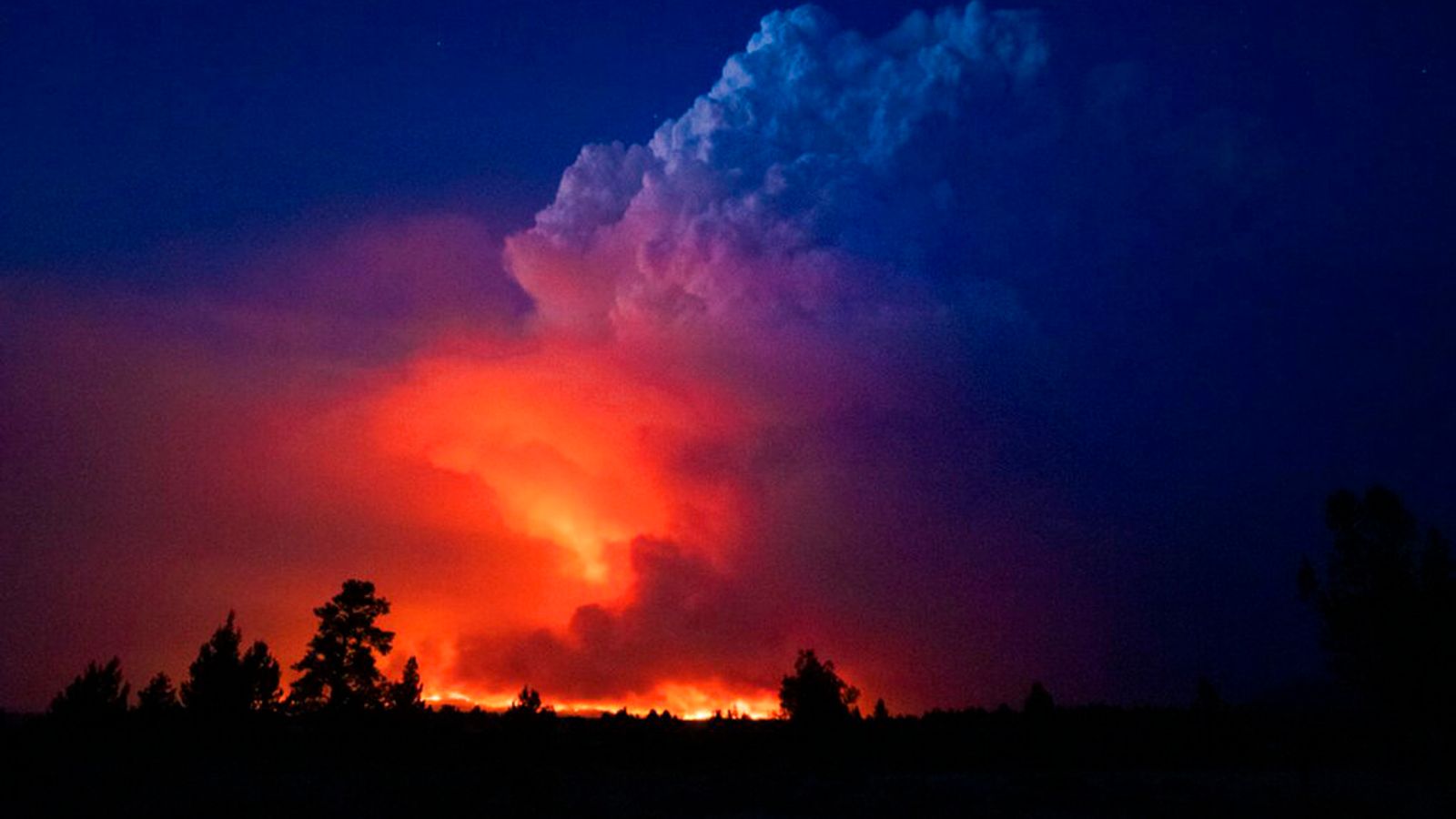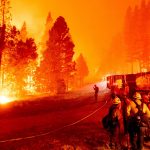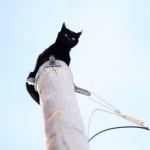Firefighters are battling to control a wild inferno which is spreading up to four miles a day and has left 2,000 people homeless in Oregon.
The so-called Bootleg Fire is ripping through southeast Oregon and is said to be the largest of dozens of wildfires burning across the US.
The blaze has now torched an area larger than New York City after spreading almost 5,000 acres in just 24 hours – with powerful winds fanning the flames and extreme drought further exacerbating the intensity of the blaze.
Authorities have warned residents to evacuate amid fears the Bootleg Fire could merge with other smaller blazes.
More than 1,700 firefighters have been aided by a dozen water-dropping helicopters in their efforts to extinguish the blaze, which began on 6 July around 250 miles south of state capital, Portland.
The Bootleg Fire has now charred more than 227,000 acres in and around the Fremont-Winema National Forest – exceeding the landmass of New York City.
It was around 7% contained as of Thursday, when evacuation orders were expanded to include Summer Lake and Paisley – towns in Lake County just north of the California border.
Oregon Department of Forestry’s incident commander, Joe Hessel, said: “The extremely dry vegetation and weather are not in our favour.”
Department spokesman Jim Gersbach added that it was “extremely uncommon for us to reach this level of demand on firefighting resources”.
Please use Chrome browser for a more accessible video player
The Bootleg is said to rank as the largest of 70 major active wildfires which have affected almost one million people in 11 states, according to the National Interagency Fire Centre in Idaho.
No serious injuries have been reported, although the fire has destroyed at least 21 homes and more than 50 other buildings.
Scientists believe the frequency and intensity of the fires are the result of prolonged drought due to climate change.
It comes the mercury hit 54C at Death Valley in southeastern California’s Mojave Desert, as the western US finds itself in the grip of a fierce heatwave.
The temperature was recorded by the National Weather Service at Furnace Creek and was only just surpassed by a 57C (134.6F) record in the same location in 1913 – considered the highest on Earth.
Montana, Alaska and Idaho have also been affected by the spate of wildfires.






















